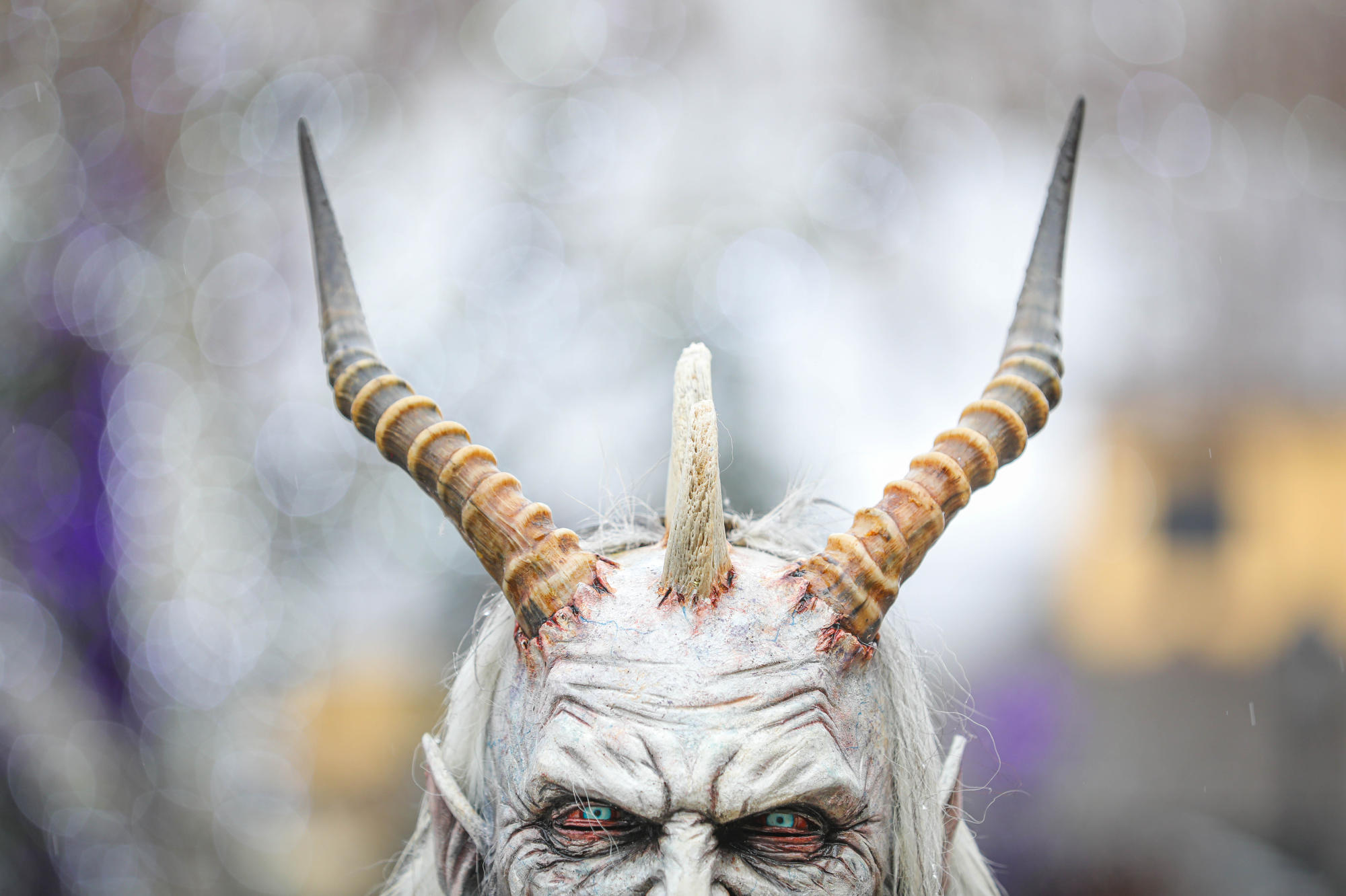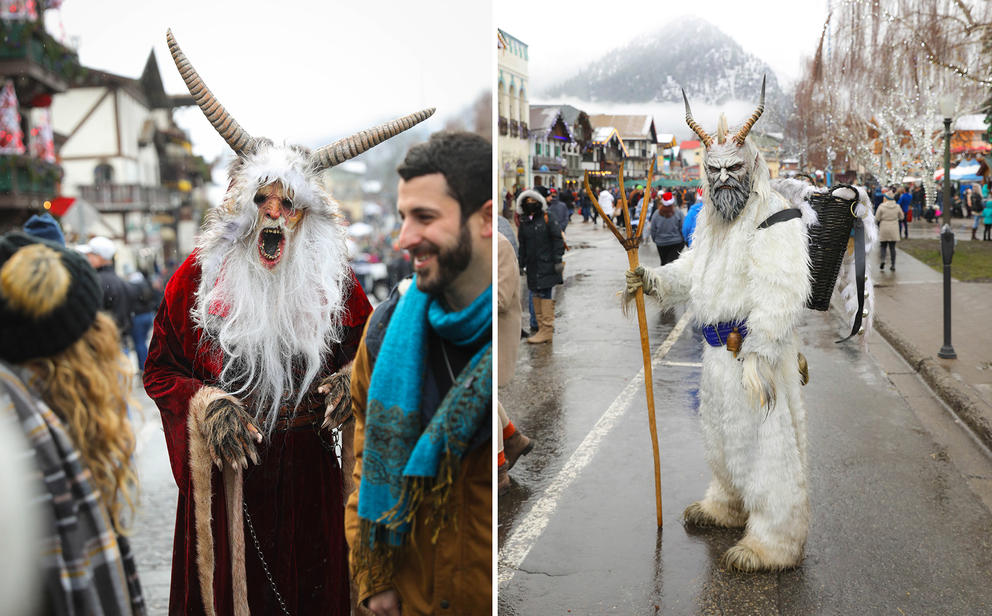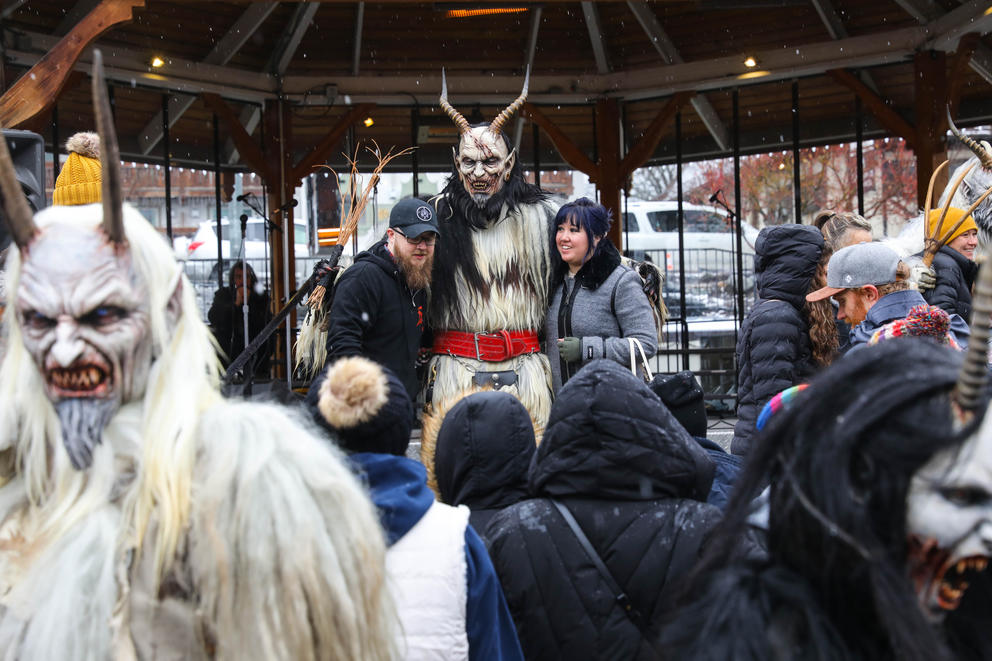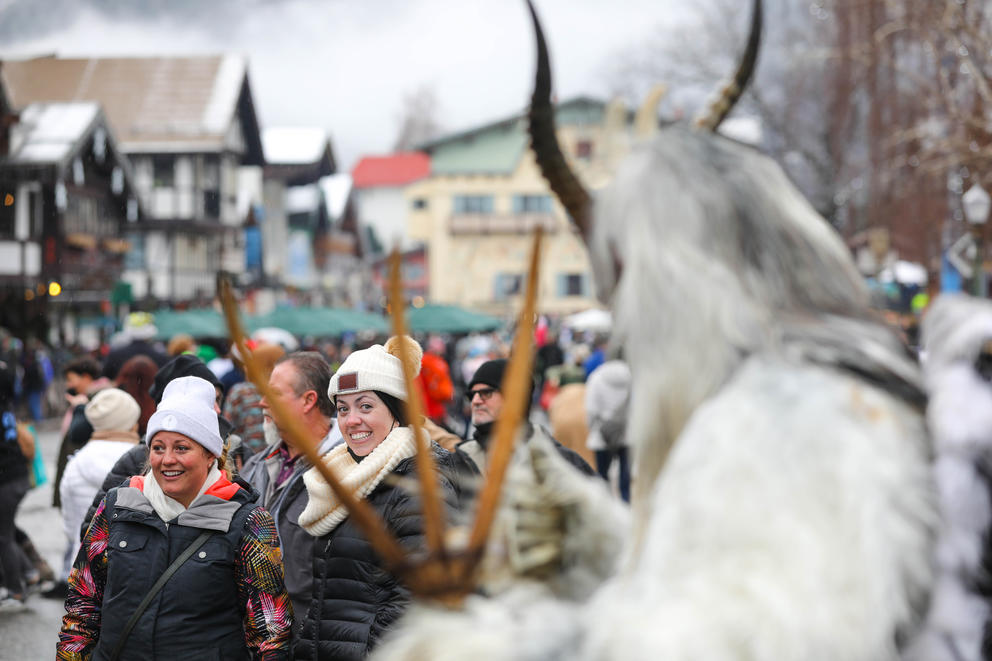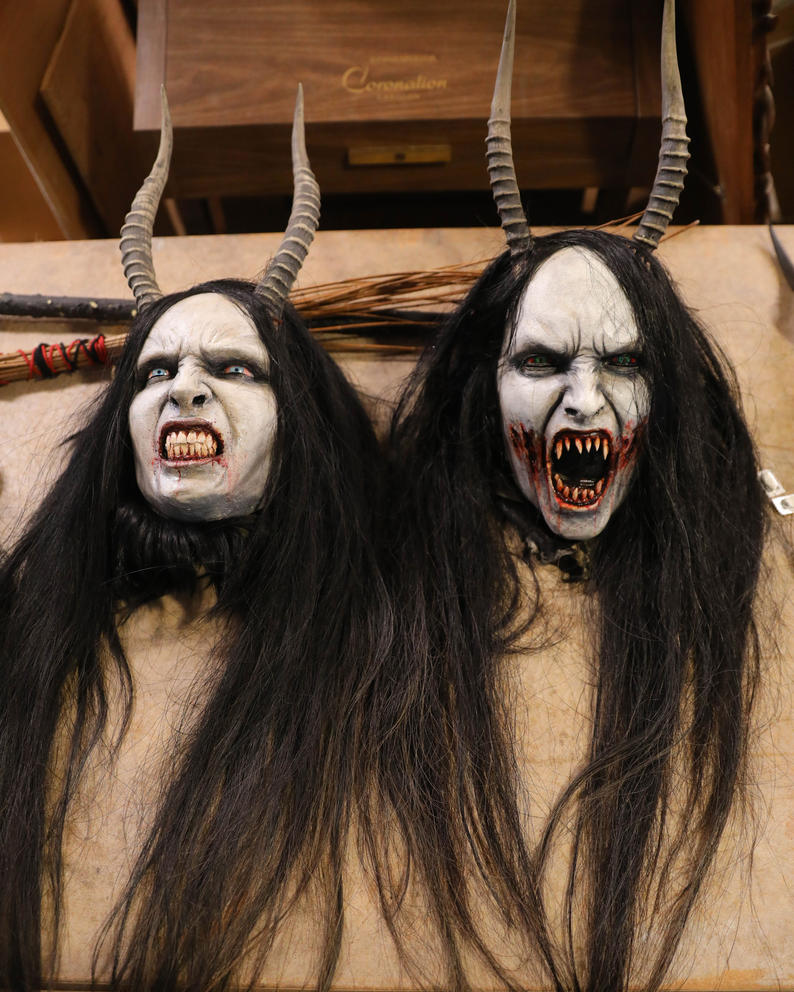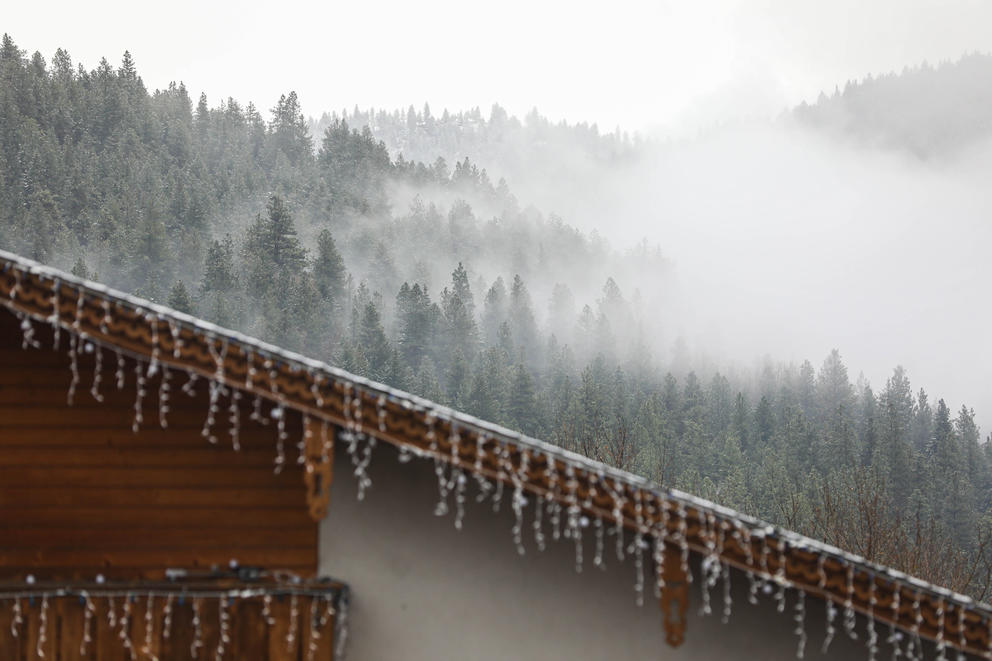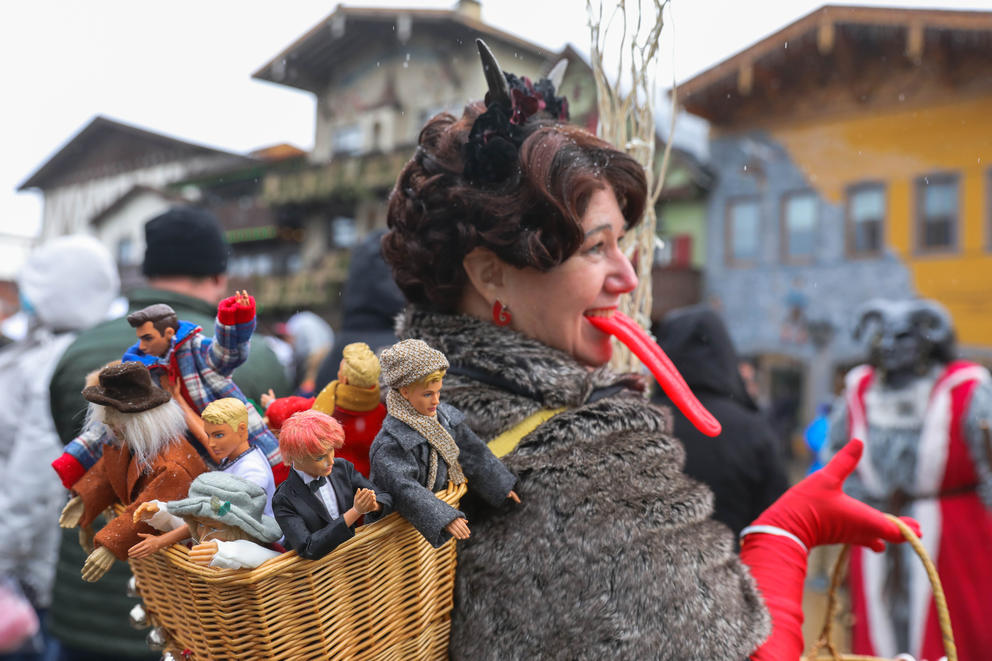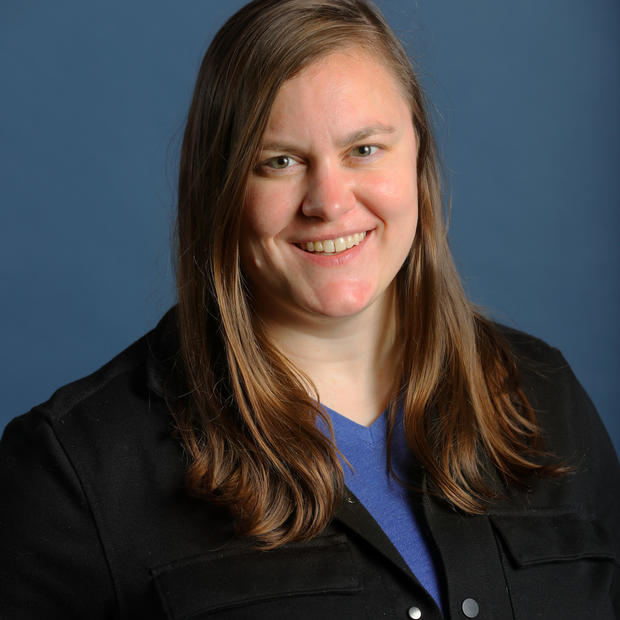During one weekend earlier this month, a group of horned half-goat, half-human creatures dressed in animal fur robes joined other holiday cosplayers in the streets of this Bavarian-themed town.
The bells around their waists marked their arrival, as they walked the streets of downtown Leavenworth. They were silent, letting their elaborate, dramatic wooden masks and costumes speak for themselves.
The members of Krampus Seattle have been introducing Washington holiday revelers to the tradition celebrated in Germany, Austria and several Eastern European countries for the past several years. According to the tradition, Krampus walks through the streets to terrify children into being good before St. Nicholas’ arrival the following day.
Krampus Seattle’s roots are in haunted houses, not the streets of Eastern Europe. But they started taking their scary act to Leavenworth last year after their holiday haunted house in the Seattle area was canceled because of the pandemic.
Visitors enjoyed the masked horned alternative to Santa Claus. Adults and children took photos and selfies, and the group ended up spending hours downtown. “We were packed,” said John Hurst, co-founder of the Krampus Seattle group.
This year, the group returned to Leavenworth as part of the city’s official holiday programming.
The invitation came as the city shifted from a big holiday lighting event on several weekends to an ongoing monthlong “Village of Lights” celebration featuring different holiday traditions, from Bavaria and worldwide.
Krampus Seattle’s efforts fit perfectly in this shift, said Jessica Stoller, marketing and public relations director of the Leavenworth Chamber of Commerce, which organizes the city’s holiday events.
“We’ve always done a history of St. Nicholas in years past. There’s so much history behind it,” Stoller said.
Deborah Jezek, dressed as Lady Krampus, gives out candy to, from left, Lyric Priddy, 5; Isabell Rivero, 7; Hailey Merry, 10; and Lorehanne Priddy, 7, as she and other Krampus enthusiasts celebrate the mythical creature in downtown Leavenworth, Dec. 4, 2021. According to legend, Lady Krampus protects women and children from bad men. (Genna Martin/Crosscut)
From Germany to Puget Sound
The Krampus tradition dates back hundreds of years.
On Dec. 5 each year, people throughout Germany, Austria and Eastern Europe celebrate Krampusnacht, drinking and walking the streets in costume and chasing children. The event falls the day before St. Nicholas Day, Dec. 6. The Krampuses are supposed to terrify children into behaving before St. Nicholas arrives the following day.
Hurst, a resident of Pacific, a town in King and Pierce counties, first looked into Krampus in 2017 when researching ideas for a holiday-themed set for a Halloween haunted house in Maple Valley, the proceeds of which went to various charities.
He found it was far more challenging to re-create Krampus in the U.S. When it came time to find costumes and masks, Hurst was limited to items made for a 2015 horror film that had a scant reference to the holiday tradition.
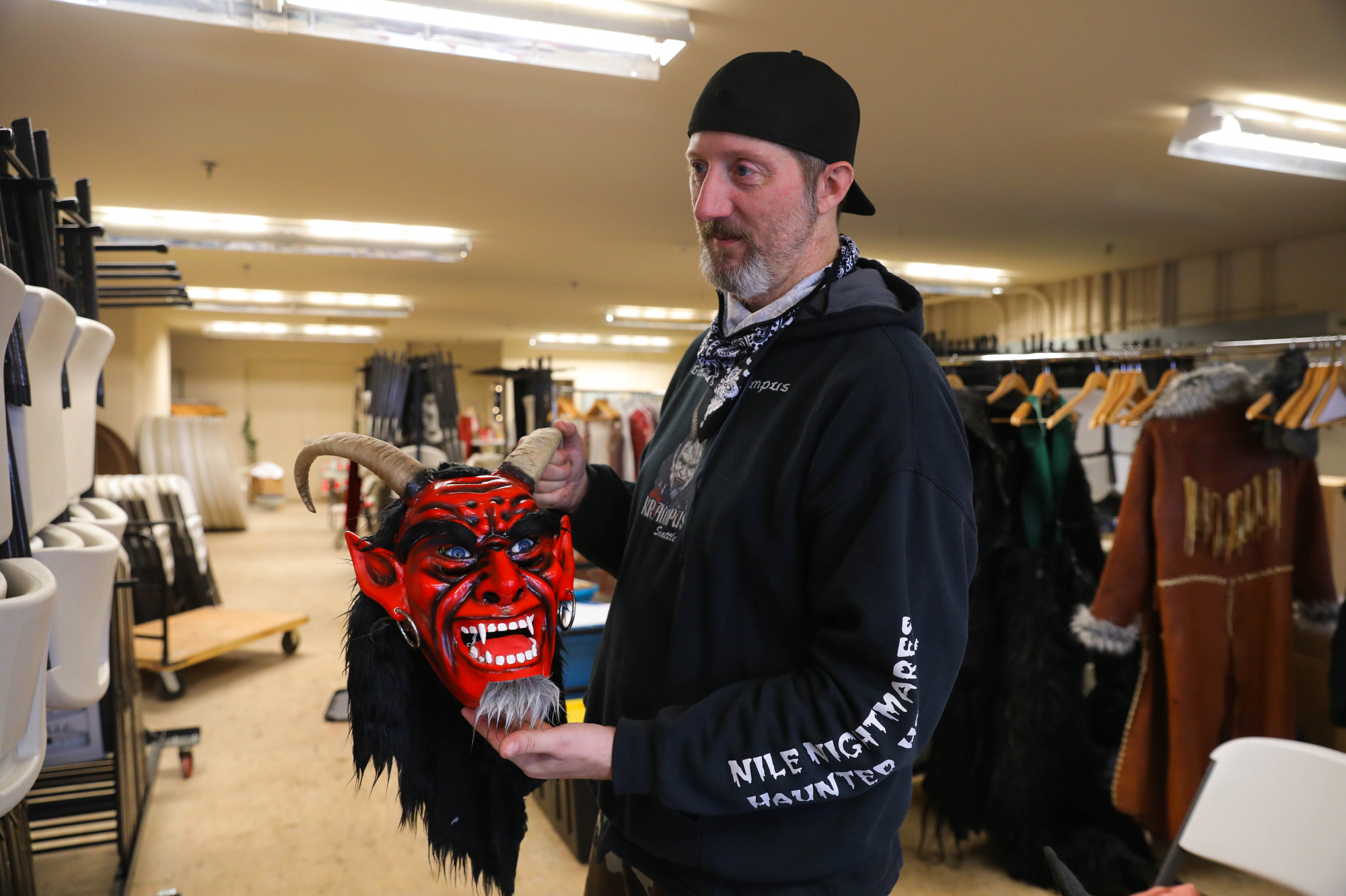
Wooden Krampus masks were handmade in Europe and cost hundreds of dollars. He eventually decided to make the investment and ordered a mask from a maker in Austria.
The investment paid off. The Krampus theme was a hit with visitors to the haunted house, and Hurst’s set received recognition from his peers in the haunted house industry.
He then teamed up with a friend, Peter Pawlicki, who was involved with a haunted house in Mountlake Terrace, leading them to form Krampus Seattle in 2018.
Both Hurst and Pawlicki looked further into the Krampus tradition as the group got started. Hurst purchased a book by a member of a Krampus group in Los Angeles that gave him more insight into the folklore. And the pair watched YouTube videos of the Krampusnacht in various communities around Austria and Germany.
Over time, Krampus Seattle acquired additional masks from the same Austrian maker and worked with another European creator on authentic costumes.
That turned out to be a bit of an adjustment. The costumes had a distinct barnyard smell, a product of the fur. With guidance from the European craftsman, Hurst learned there was no way to get around the odor. It was a feature, not a bug.
“That’s part of the tradition, that’s part of the costume,” Hurst said. “I put some essential oil on mine, but it smells like a goat.”
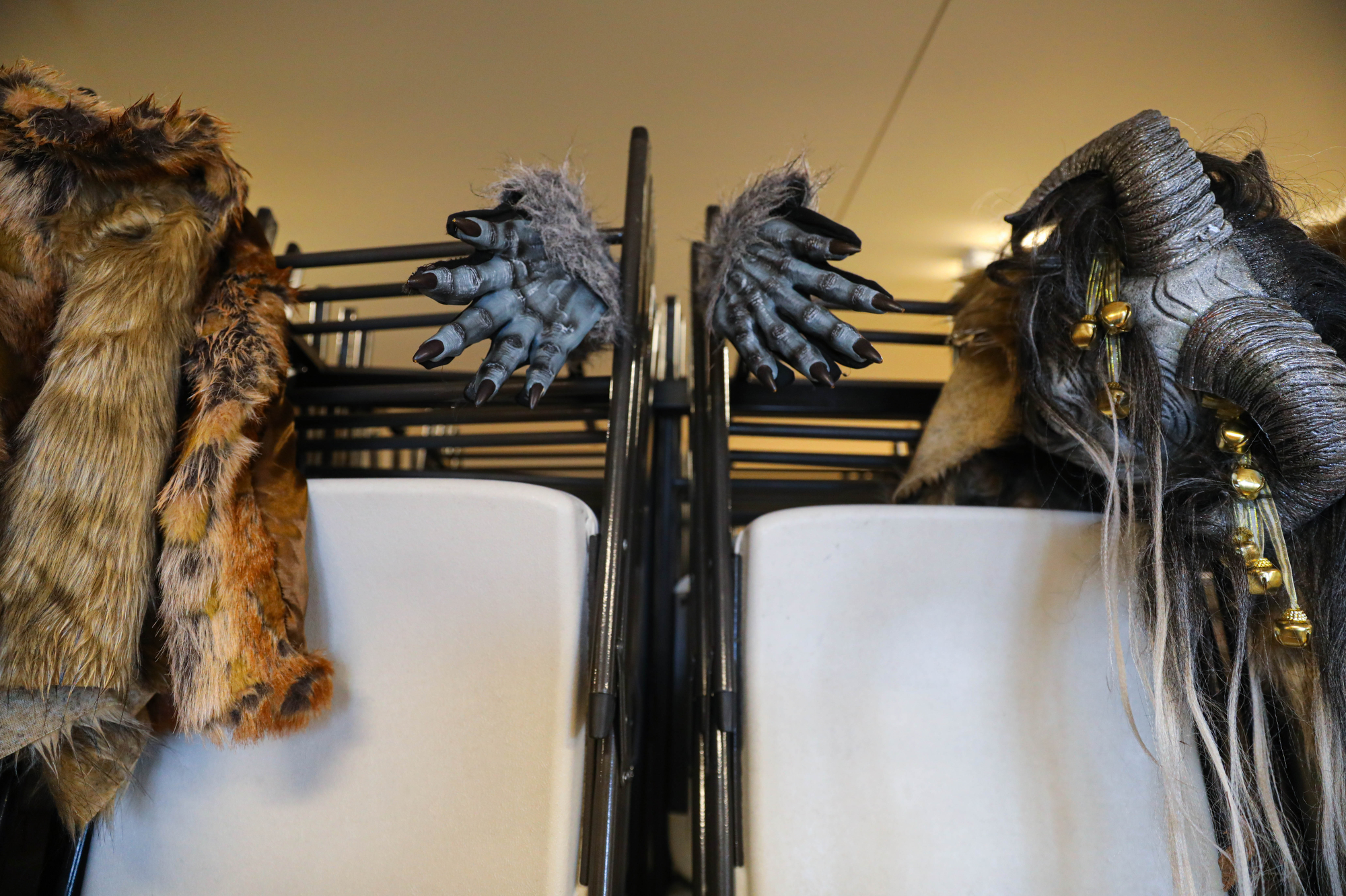
But for Hurst, authenticity was more important than personal comfort. He feels a great responsibility to introduce the tradition correctly.
“We want to honor the tradition and not turn it into movie garbage or horror,” he said.
Pawlicki said a big draw of the group is being part of a long-standing holiday tradition that hasn’t been commercialized.
“It’s something different, it’s traditional — so you can always fall back on that,” Pawlicki said. “You’re not just out there wearing scary stuff in the holiday season — there’s a purpose for it.”
Spreading awareness
While many in the U.S. have not heard of Krampus, others have an apparent affinity for the tradition.
Chuckanut Bay Distillery in Bellingham releases a Krampus-themed liquor during the holiday season featuring a sketch of the creature on the label. A few years ago, Seattle Immersive Theatre paid homage to the tradition with its production of Krampus Christmas.
In Leavenworth, when Joe Seguin searched for names for his comic book and game shop, his childhood in Germany with his military family came to mind.
His parents wanted to do local traditions, so they told him about St. Nicholas Day — and Krampus.
Seguin said he was surprised that there wasn’t any reference to Krampus during holiday celebrations in Leavenworth, so he paid homage to the tradition with the store’s name: Krampus Kave.
“We just knew it had to involve Krampus in some way,” Seguin said.
Store manager J.J. Hernandez said he likes the different types of people attracted to Krampus. “People who like Christmas, people who like dressing up, people who like to scare children, people who hate Christmas,” he said.
It’s been a bit of a struggle to incorporate Krampus into the store’s offerings; Krampus-themed items aren’t easily accessible. Eventually, the store worked with local artists on cards sold there.
Seguin and Hernandez were thrilled when they met the Krampus group during its walk around Leavenworth last year. They eventually connected Krampus Seattle to the Leavenworth Chamber of Commerce.
“They’re doing really good work — they know what they’re doing. They have a deep connection to the source,” Hernandez said.
Bringing the tradition to Leavenworth
Twice on Dec. 4 this year, members of Krampus Seattle paraded Leavenworth’s town square, as visitors heard a brief history of the Krampus tradition, including the masks and costumes they wore.
Shortly after the presentation, people crowded around Krampus Seattle members for photos.
While in folklore Krampus terrified children, most children in Leavenworth — and adults, for that matter — were far from scared. And departing from the tradition of giving coal, the Krampuses gave out gift cards, socks and candy.
One little boy in the audience expressed disappointment that the Krampus group wasn’t chasing children. “They said they chase us. I want to be chased,” he lamented.
Dawn Neal, an adult resident of Rochester, in Thurston County, who was there with her family, worked to get a photo with every Krampus walking around Leavenworth.
Neal never attended a holiday event in Leavenworth until now, but she was familiar with the Krampus Seattle group, having followed it on Facebook. She was excited about the opportunity to see the group during her first holiday visit.
“I find interest in a lot of folklore and customs,” she said. “I think it’s super cool. I think they did a great job.”
The event also served as an informal convention for others interested in the Krampus tradition, including Deborah Jezek, part of a Krampus group in Bremerton.
Jezek offered her twist on the tradition with Lady Krampus, a character that showed up in postcards during the Edwardian period. Lady Krampus was a protector of women and children, and her job was to punish grown men who would scare them. To illustrate this practice, Jezek carried a basket full of male dolls.
While many people see Krampus as an anti-Santa, she has a more nuanced perspective.
“Krampus and St. Nicholas, they’re not enemies,” she said. “They work together.”
Krampus’ future in Leavenworth
Not everyone enjoyed Krampus Seattle’s presence in Washington’s Christmas village. Benjamin Herreid, a local restaurant owner, complained on Facebook that the city's inclusion of the group in its celebrations was its attempt to shed family-friendly Christmas events from its holiday programming. He also complained about his inability to secure a booth for his Knights of Columbus group.
The post was reported on CatholicVote.com, a Catholic-based civic group, with the title “Washington Town Shocked by Erasure of Christmas Customs.” The article encouraged readers to contact the Leavenworth Chamber of Commerce to stop inviting Krampus Seattle to future holiday events so that “such displays should never again be brought to family Christmas celebrations.”
As a result, Krampus Seattle group members received a mound of critical emails and online posts, Hurst said.
But the online feedback doesn’t reflect what he saw while his group was in Leavenworth.
“The majority of people who were commenting in the social media groups and were messaging [us] were people who weren’t even at the event,” he said.
The Leavenworth Chamber of Commerce’s Stoller said the group received a “flood of feedback,” both positive and negative. She wouldn’t say whether Krampus Seattle would be invited next year.
“I don’t know what the plans are for next year,” she said. “The chamber board meets in January to review our events and initiatives from the previous year and will weigh each carefully for 2022 planning.”
Hurst said the group is prepared to make alternative plans next year if Leavenworth officials do not invite it back. One option is simply dressing up as visitors as members did last year.
And regardless of what happens, the goal hasn’t changed; they want to keep appearing in holiday events throughout the state to introduce the Krampus tradition to more people. And the group also intends to find ways to raise money for children’s charities.
The criticism “is discouraging, but it’s not something to quit over,” Hurst said.
Hurst said he wants to attend a Krampusnacht in Austria or Germany, maybe as soon as next year. He hopes to meet some of his European collaborators, such as the mask maker.
Hurst has also been working with other Krampus groups in the U.S., providing the opportunity to use the knowledge and connections he’s gained in the past several years.
“There are solo Krampuses working hard to start something. I helped a guy from Salt Lake City. I helped him find the right connections to get a mask and costume. He started a group,” Hurst said. “It’s been a source of satisfaction.”

